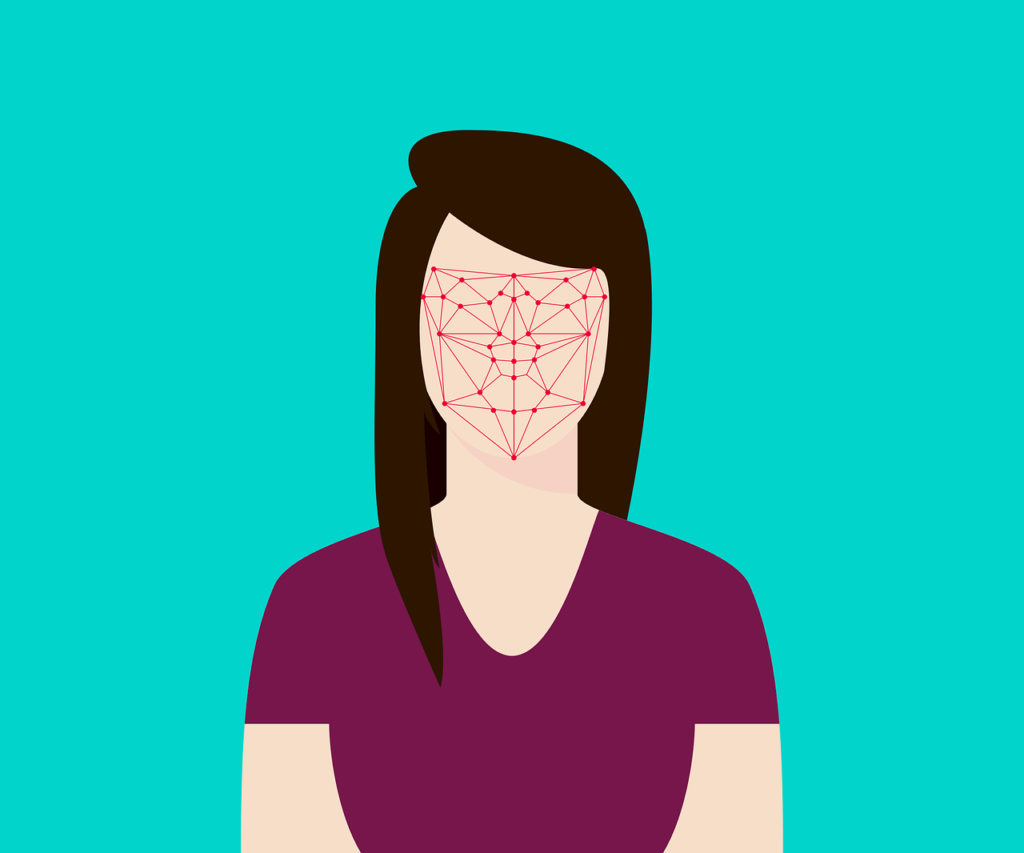Imagine never having to worry about forgetting your keys or fumbling for them in the dark. With the latest innovations in biometric locks, advanced technology is revolutionizing home security. These cutting-edge locks use unique personal identifiers such as fingerprints, facial recognition, or even voice recognition to grant access. No longer limited to the sci-fi movies, biometric locks are becoming increasingly popular for their convenience and enhanced level of security. In this article, we will explore some of the latest advancements in biometric and electronic locks, and how they are changing the way we protect our homes and belongings. Get ready to be amazed by the future of home security!

This image is property of pixabay.com.
Facial Recognition Locks
How facial recognition locks work
Facial recognition locks use advanced technology to identify and authenticate an individual based on their unique facial features. These locks typically have a built-in camera that captures an image of your face, which is then analyzed and compared to a pre-stored database of authorized users. The facial recognition algorithms look for specific points and patterns on your face, such as the distance between your eyes or the shape of your nose, to create a facial template. If there is a match between the captured image and an authorized user, the lock will grant access.
Benefits of facial recognition locks
One of the key advantages of facial recognition locks is convenience. With a simple glance, you can effortlessly unlock doors or access your devices, without the need for keys or passwords. This eliminates the risk of losing keys or forgetting complex passwords. Additionally, facial recognition locks offer a high level of security. Since facial features are unique to each individual, it becomes difficult for unauthorized users to impersonate someone else. Facial recognition locks also provide a quick and efficient way to grant access to multiple users, making them ideal for shared spaces or workplaces.
Drawbacks of facial recognition locks
While facial recognition locks have numerous benefits, they also have some limitations. One of the main concerns with facial recognition technology is its accuracy and reliability. Factors such as lighting conditions, facial expressions, and changes in appearance (such as growing facial hair or wearing glasses) can affect the performance of these locks. False acceptance and false rejection rates can occur, leading to unauthorized access or denied entry for authorized users. Privacy is another concern, as some may feel uncomfortable with the idea of their face being stored and analyzed by a device. It’s important for organizations and individuals to consider these drawbacks and weigh them against the benefits before implementing facial recognition locks.
Fingerprint Locks
Overview of fingerprint locks
Fingerprint locks are designed to use the unique ridges and patterns on your fingertips to verify your identity. These locks have a built-in fingerprint sensor that captures an image of your fingerprint when you place your finger on the sensor. The image is then converted into a digital template that is compared to the authorized fingerprints stored in the system. If there is a match, the lock will grant access.
Advantages of fingerprint locks
Fingerprint locks offer several advantages, making them a popular choice for securing personal belongings and access to restricted areas. One of the key advantages is the high level of accuracy and reliability. Fingerprint recognition technology has significantly improved over the years, resulting in low false acceptance and false rejection rates. Fingerprint locks also provide fast and convenient access, as you only need to place your finger on the sensor to unlock the door or device. Additionally, fingerprints are unique to each individual and difficult to replicate, making fingerprint locks highly secure.
Limitations of fingerprint locks
Despite their benefits, fingerprint locks have a few limitations. The primary concern is that fingerprints can potentially be lifted or reproduced, although this is a challenging task that requires specialized techniques. In rare cases, individuals with certain skin conditions or injuries may experience difficulty in getting accurate fingerprint readings, potentially leading to denied access. Another drawback is the need for physical contact with the fingerprint sensor, which may not be ideal in situations where hygiene is a priority. It’s important to consider these limitations and evaluate the suitability of fingerprint locks for specific use cases.

This image is property of pixabay.com.
Voice Recognition Locks
Explanation of voice recognition locks
Voice recognition locks utilize the unique characteristics of an individual’s voice to verify their identity. These locks typically have a built-in microphone that records and analyzes spoken phrases or passphrases provided by the user. The system compares the vocal patterns, pitch, tone, and other acoustic features of the user’s voice with the authorized voice patterns stored in its database. If there is a match, the lock will grant access.
Pros of voice recognition locks
Voice recognition locks offer several advantages that make them a viable option for securing various applications. One of the key benefits is the convenience and ease of use. You can simply speak the passphrase without the need for physical contact, making them suitable for hands-free operations. Voice recognition locks also provide a high level of security, as voiceprints are unique to each individual and difficult to replicate. Moreover, these locks can be particularly useful for individuals with limited mobility or visual impairments, providing them with an accessible way to secure their belongings or access controlled areas.
Cons of voice recognition locks
Despite their advantages, voice recognition locks also have some drawbacks. Ambient noise or changes in vocal characteristics, such as a cold or sore throat, can affect the accuracy of voice recognition systems. False acceptance or rejection rates may occur, leading to potential security risks or denied access for authorized users. Another concern is the vulnerability of voiceprints to spoofing attacks, where an unauthorized person imitates the authorized user’s voice. It’s crucial to consider these limitations and assess the suitability of voice recognition locks for specific environments and scenarios.
Iris Scanners
Overview of iris scanners
Iris scanners use the unique patterns of an individual’s iris, the colored portion of the eye, to authenticate their identity. These scanners employ near-infrared light or a high-resolution camera to capture an image of the iris. This image is then analyzed, and the unique patterns, such as furrows, crypts, and freckles, are extracted to create an iris template. The template is compared against a database of authorized iris templates, and if a match is found, the lock will grant access.
Benefits of iris scanners
Iris scanners offer several benefits that make them highly reliable and secure for biometric authentication. One of the key advantages is their accuracy, as the patterns in the iris are highly distinctive and remain relatively stable throughout a person’s lifetime. This results in low false acceptance and false rejection rates, enhancing the security of the system. Iris scanners also provide non-contact authentication, eliminating the need for physical contact and reducing the risk of spreading germs. Additionally, iris recognition is known for being tamper-resistant, as attempts to replicate or spoof the iris are extremely challenging.
Challenges of iris scanners
While iris scanners offer notable advantages, they also face certain challenges. The required hardware for iris scanning can be expensive, limiting the widespread adoption of this technology. Individuals who wear certain types of contact lenses or have ocular conditions, such as cataracts, may experience difficulty in obtaining accurate iris readings. This could result in denied access or reduced reliability. Another challenge is the need for users to position their eyes correctly for optimal scanning, which may require some practice or adjustment. Considering these challenges is essential when considering the implementation of iris scanners in different settings.

This image is property of pixabay.com.
Palm Print Scanners
How palm print scanners function
Palm print scanners utilize the unique patterns, ridges, and lines on an individual’s palm to verify their identity. These scanners capture the image of the palm by placing it on a glass surface or a sensor. The captured image is then compared to the authorized palm prints stored in the system’s database. If there is a match between the captured image and an authorized palm print, the lock will grant access.
Advantages of palm print scanners
Palm print scanners offer several advantages that make them a reliable choice for biometric identification. One of the key benefits is the large surface area available for scanning, which results in a higher probability of finding a match and reducing false acceptance rates. Palm prints are also less likely to be damaged or altered compared to fingerprints, increasing the durability and accuracy of the system. Additionally, palm print scanners provide a hygienic solution, as they do not require physical contact with the sensor, making them suitable for environments where cleanliness is crucial.
Disadvantages of palm print scanners
Despite their advantages, palm print scanners also have some limitations. One concern is the possibility of capturing the palm print without the individual’s knowledge or consent, contributing to privacy concerns. Additionally, palm prints may change over time due to aging or certain skin conditions, potentially affecting the accuracy of the system. In some cases, the quality of the palm print image may be compromised by factors such as excessive sweating or the presence of scars or injuries. It’s important to consider these limitations when evaluating the suitability of palm print scanners for specific applications.
Hand Geometry Scanners
Explanation of hand geometry scanners
Hand geometry scanners use the physical features, such as finger length, width, and knuckle patterns, to authenticate an individual’s identity. These scanners typically have a surface or a frame that users place their hand onto. The scanner captures an image of the hand and extracts the unique features to create a hand template. The template is then compared to the authorized hand templates stored in the system, and if there is a match, the lock will grant access.
Benefits of hand geometry scanners
Hand geometry scanners offer several benefits that make them a practical choice for biometric identification. One of the key advantages is the ease of use, as individuals simply need to place their hand on the scanning surface, making it user-friendly for all age groups. Hand geometry recognition also provides a high level of accuracy and security. The physical features used for authentication are difficult to replicate or forge, minimizing the risk of unauthorized access. Moreover, hand geometry scanners are less affected by variations in lighting conditions or changes in appearance, making them reliable in different environments.
Limitations of hand geometry scanners
Despite their advantages, hand geometry scanners have a few limitations to consider. The scanners require users to properly position their hand, aligning their fingers and palm correctly for optimal scanning. This may require some practice or adjustment, especially if individuals have physical impairments or disabilities. Another limitation is the relatively large size or footprint of hand geometry scanners, which may not be suitable for applications where space is limited or portability is necessary. It’s important to assess these limitations and evaluate the feasibility of hand geometry scanners for specific use cases.
Heartbeat Recognition Locks
Overview of heartbeat recognition locks
Heartbeat recognition locks utilize the unique pattern and rhythm of an individual’s heartbeat to verify their identity. These locks typically have sensors that track the minute changes in blood volume within the fingertip or the palm. The captured data is then analyzed to identify the unique heartbeat pattern associated with the authorized user. If there is a match, the lock will grant access.
Advantages of heartbeat recognition locks
Heartbeat recognition locks offer several advantages that make them an intriguing option for biometric authentication. One of the key benefits is the continuous and dynamic nature of the heartbeat, making it difficult to replicate or spoof compared to static biometrics. Heartbeat recognition is non-intrusive and contactless, as it only requires the individual to place their fingertip or palm on the sensor. This ensures a hygienic experience, eliminating the need for physical contact. Furthermore, the liveness detection capabilities of heartbeat recognition locks make them highly resistant to spoofing attacks, enhancing their security.
Drawbacks of heartbeat recognition locks
Despite their advantages, heartbeat recognition locks also have some drawbacks. The hardware required for accurate heartbeat recognition can be complex and expensive, limiting the widespread adoption of this technology. Factors such as ambient noise, motion, or certain medical conditions may introduce noise or inconsistencies into the heartbeat signal, affecting the accuracy of the system. Additionally, the need for a clear and stable signal during authentication may require individuals to remain still for a brief period, which could be inconvenient in certain scenarios. Evaluating these drawbacks is crucial when considering the implementation of heartbeat recognition locks in different environments.
DNA Biometric Locks
Explanation of DNA biometric locks
DNA biometric locks leverage the unique genetic code of an individual to verify their identity. These locks typically require a DNA sample, which can be obtained from sources such as saliva, hair follicles, or skin cells. The DNA sample is examined to extract specific genetic markers, and the resulting template is compared against the authorized DNA templates stored in the system’s database. If there is a match, the lock will grant access.
Pros of DNA biometric locks
DNA biometric locks offer several advantages that make them highly secure and accurate for authentication purposes. One of the major benefits is the uniqueness of DNA, as the genetic code varies significantly among individuals. This ensures a high level of accuracy in identifying individuals. DNA biometric locks also provide long-term stability, as DNA remains relatively unchanged throughout a person’s life. Moreover, DNA samples can be discreetly collected, making them suitable for applications where convenience or covert identification is required.
Cons of DNA biometric locks
Despite their advantages, DNA biometric locks also face certain limitations and challenges. One of the main concerns is the complexity and cost of DNA analysis, which requires specialized equipment and expertise. This may restrict the widespread adoption of DNA biometric locks. Privacy is another significant concern, as the collection and storage of DNA samples raise ethical and legal questions regarding the use and potential misuse of personal genetic information. Additionally, obtaining a DNA sample for every authentication could be time-consuming and impractical in certain scenarios. It’s essential to carefully consider these drawbacks and address any associated concerns when considering the implementation of DNA biometric locks.
Behavioral Biometric Locks
How behavioral biometric locks work
Behavioral biometric locks utilize unique behavioral traits, such as typing patterns, signature dynamics, or gait recognition, to authenticate an individual’s identity. These locks typically collect data on the specific behavioral patterns exhibited by the user during a specific activity. This data is then analyzed and compared to the authorized behavioral templates stored in the system. If there is a match, the lock will grant access.
Benefits of behavioral biometric locks
Behavioral biometric locks offer several benefits that make them a versatile option for identity verification. One of the key advantages is the non-intrusive nature of these biometrics, as individuals can be authenticated without physical contact or the need for specialized equipment. Behavioral biometrics are difficult to replicate or imitate, enhancing the security of the system. These locks can also provide continuous authentication, continuously monitoring the behavioral patterns for added security. Moreover, behavioral biometrics are typically less affected by factors such as aging or changes in appearance, making them relatively reliable over time.
Challenges of behavioral biometric locks
Despite their advantages, behavioral biometric locks also face certain challenges. The accuracy and reliability of these biometrics depend on consistent and recognizable behavioral traits, which may vary among individuals or change due to external factors. Variations in typing style, for example, could result in false acceptance or rejection rates. Additionally, behavioral biometrics are heavily influenced by environmental conditions, such as the type of device or stress levels, which may affect the accuracy of the system. It’s important to consider these challenges and evaluate the suitability of behavioral biometric locks for specific use cases and environments.
Multi-Modal Biometric Locks
Overview of multi-modal biometric locks
Multi-modal biometric locks combine multiple biometric modalities, such as fingerprint, iris, and voice recognition, to enhance the accuracy and security of identity verification. These locks require users to provide multiple biometric data points for authentication. The system analyzes and compares the collected data with the authorized multi-modal templates stored in its database. If all the biometric data points match, the lock will grant access.
Advantages of multi-modal biometric locks
Multi-modal biometric locks offer several advantages that make them highly robust and secure. The combination of multiple biometric traits significantly enhances the accuracy of identification, reducing the risk of false acceptance or rejection rates associated with single-modal biometric systems. Multi-modal locks also provide flexibility, as users have multiple options for authentication, increasing convenience and accommodating individuals with specific biometric limitations. By leveraging multiple biometrics, these locks offer a high level of accuracy and security, making them less susceptible to unauthorized access or spoofing attacks.
Limitations of multi-modal biometric locks
Despite their benefits, multi-modal biometric locks have certain limitations to consider. The hardware and software required to support multiple biometric modalities can be complex and expensive, potentially limiting their widespread adoption. Additionally, the collection and analysis of multiple biometric data points may require additional time and computational resources, affecting the speed of authentication. It’s important to carefully evaluate the efficiency and cost-effectiveness of multi-modal biometric locks based on the specific requirements and constraints of the intended application.
In conclusion, biometric locks offer a wide range of options for secure and convenient identification and access control. Whether it’s facial recognition, fingerprint scans, voice recognition, iris scanners, palm print scanners, hand geometry scanners, heartbeat recognition locks, DNA biometric locks, behavioral biometric locks, or multi-modal biometric locks, each technology has its own strengths and limitations. By understanding how these biometric locks work and considering the benefits and drawbacks of each, individuals and organizations can make informed decisions when selecting the most suitable biometric locking system for their specific needs. As technology continues to advance, we can expect further innovations and improvements in biometric locks, ensuring enhanced security and user experience in the future.
